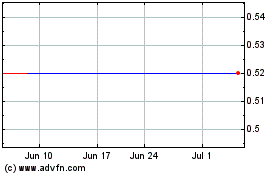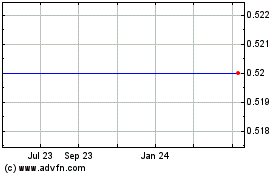Exposing Bear Stearns Assets, Fed Opens Window On Credit Crisis
April 07 2010 - 11:19AM
Dow Jones News
The Federal Reserve Bank of New York's newly unveiled portfolio
of former Bear Stearns assets offers a unique window into the
workings of the biggest crisis to hit Wall Street in 80 years.
The 131 pages of Cusip numbers and their dollar amounts, pored
over by analysts since their release last Wednesday, raise as many
questions as they provide answers about the risks U.S. taxpayers
absorbed when the Fed engineered JPMorgan Chase & Co.'s (JPM)
rescue of Bear Stearns Cos. in March 2008.
But as a snapshot of Bear's balance sheet at its most distressed
moment, the Fed's holdings in Maiden Lane LLC--the special-purpose
vehicle that was followed by two others used in the bailout of
American International Group Inc. (AIG)--also provide insights into
what went wrong, both at that fated firm and on Wall Street in
general. Bear's experience was emblematic of practices that were
widespread in the industry, and which resulted in many more
bailouts and government-assisted takeovers in the months that
followed. The difference is that, in Bear's case, we now have a
chance to view its dirty laundry.
The portfolio, which has a notional value of $74.8 billion but
which is valued on the Fed's balance sheet at just $27 billion,
offers a picture of how structured finance led investment banks
away from their standard intermediary role to one in which they
held large long-term positions on their balance sheets.
In this structural shift, "people who were sociologically used
to being agents became principals," said Terry Connelly, dean of
the Ageno School of Business at Golden Gate University in San
Francisco. "And they were amateurs at it."
Because these investment banks didn't have access to the
government-insured deposits that backstop commercial banks, their
actions eventually put the entire financial system in grave
danger.
"You can only understand Bear Stearns' balance sheet if you
understand an idea that's culturally ingrained on Wall Street, and
that is that prudence is for wimps," said Connelly, who worked at
Salomon Brothers during that legendary investment bank's
bond-underwriting heydey in the 1980s.
Originally, investment banks made their money by buying up
mortgage loans, packaging them into securities, then selling them
on to third-party investors. That meant their risk was limited:
While interest rates could go against them--a sharp rise could have
made a package of loans suddenly unprofitable--such adverse moves
could be easily hedged. Hedges weren't required for long periods as
the securities were moved quickly off the firms' books.
As market participants liked to quip: Investment banks were in
the moving, not in the storage, business.
But then came collateralized-debt obligations, the multi-tiered
securities which divvied up different levels of risk from the same
pool of underlying assets--effectively giving investors a choice of
where they wanted to stand in the queue for repayment on a bond and
of what price they would pay for that privilege.
Amid the boom, yield-hungry investors started to shun the safest
tranches of those CDOs, the "super-senior secured" tiers. And in a
fatal move, investment banks opted to keep them on their books:
Since the securities were insured by AAA-rated monoline insurers
and, thus, assigned AAA ratings of their own, the banks felt
comfortable holding on to them. The only problem was that they tied
up capital. And for that, another innovative solution was found:
The credit default swap, or CDS, which allowed the banks to offset
their exposure to the CDO assets.
This is why, at the bottom of the Fed's Maiden Lane report, more
than 1,700 CDS contracts are listed.
If all the CDOs and CMOs (collateralized mortgage obligations)
in the Maiden Lane holdings functioned as Bear Stearns' inventory
for servicing client demand--rather than deliberate long-term
positions--the bank could have used a broad tradable index as a
hedge rather than individual credit default swaps. The former would
protect the entire portfolio and should in theory be cheaper and
more efficient.
One person familiar with Bear Stearns' strategies rejects that
argument. He said that the only available index for such hedges at
that time--Markit's ABX index of subprime mortgage CDS--was so
illiquid and volatile that it "proved to be quite a dangerous
hedging mechanism."
But whatever the reason for buying CDS contracts, they, too,
proved to be a flawed, if not equally dangerous, hedge when the
subprime mortgage bubble burst. As the crisis gathered pace, the
insurers lost their triple-A ratings, which led to the downgrades
of the super-senior CDO tranches.
This sealed Bear's fate: It sought to offset that loss by buying
corporate credit protection--as evidenced by the long list of
"corporate" CDS in the Maiden Lane portfolio.
Most of these carry names showing "MBIA Insurance," "Ambac
Assurance" or "Financial Security Assurance"--monoline insurers.
These were insurance contracts designed to protect Bear Stearns
from a default by the institutions that were insuring the rest of
their portfolio.
The problem was that the vicious cycle of downgrades had by then
infected the counterparties to those and every other CDS--most
significantly, AIG.
That's why, in March 2008, the Fed--the only risk-free
counterparty--had to step in, setting a precedent that would be
repeated frequently in the dramatic months that followed.
-By Michael Casey, Dow Jones Newswires; 212-416-2209;
michael.j.casey@dowjones.com
AMBAC (NYSE:ABK)
Historical Stock Chart
From Mar 2024 to Apr 2024

AMBAC (NYSE:ABK)
Historical Stock Chart
From Apr 2023 to Apr 2024
